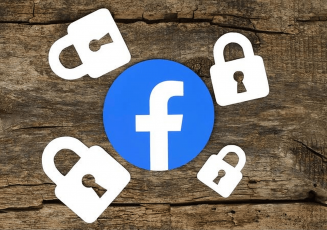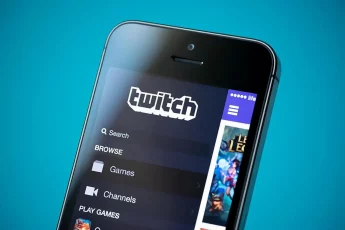As you probably know already, Facebook is Instagram’s parent company. As such, it comes as no surprise that privacy scandals are part of the conversation.
Let’s remember late 2018. Back then, the “Download Your Data” feature in Instagram had a security flaw that leaked a user’s password in plain text – which is a hacker’s ultimate prize, except that no hack was needed here.
This flaw is particularly ironic considering that the feature should supposedly have improved security and kept a user’s privacy and data safer. Moreover, it came into being after the Cambridge Analytica scandal as an attempt to calm users down. Talk about failure.
Once the problem became public knowledge, Instagram moved quickly to assure the world that only a few users were subject to any risk and that the company had already solved the issue anyway. So Instagram corrected this problem, let’s say. Does it mean it’s a safe service for you to use in terms of protecting your privacy? The answer is no. Instagram is a privacy threat to every user for a variety of reasons.
Let’s take one example. Instagram constantly tracks your physical location unless you turn that feature off by hand. No, it doesn’t do this, so your pictures get labelled automatically. However, your location informs the app about the type of advertising it should show you so that they are relevant to where you spend more of your time.
Also, your activity within the Instagram app (likes, comments, shares, interaction with stories, and more) is available to other users. And that’s just a start.
In early 2018, a DM service update came around. Unfortunately, it altered the status notification in a way that got many users upset. Instagram suddenly told users about when other users were active, and the last time they did something on the app or website (similar to WhatsApp).
Of course, this feature could be disabled if you went to the “Privacy and security” section of your account’s settings – which doesn’t change the fact that it was active by default, which was an intrusive and unilateral decision by the Instagram team.
Let’s face it: Social media are not about privacy. They’re all about sharing too much about yourself with the world in a way you can enjoy. So if you’re a social media fan, then chances are that you’re not doing your privacy any favors, and the more accounts you have, the worst risk you are incurring.
If you want to start minding your privacy a little bit more, then you’ll need to pick and choose the social media accounts you want to keep. Yes, protecting your social media privacy and security will require you to consider deleting or deactivating some of your social media accounts. This article will show you how to delete your Instagram account permanently.
Deletion vs. deactivation: This is what you need to know
Both deactivation and deletion are available for Instagram users, depending on what you want. What’s the difference?
The main characteristic of deactivation is that it’s temporary. While your account is deactivated, all of your account’s information (profile, photos, followers, likes, and comments) will remain hidden from other users. Restoring everything to normal is as simple as logging back into Instagram and resuming your regular use.
Deleting your Instagram account, on the other hand, is an exemplary operation – you can’t undo it. Once you delete the account in question, every piece of information associated with it goes away for good – all of your data, photos, followers, likes, and everything else. In addition, the username associated with this deleted account won’t be available for you to use again (nor to anybody else, for that matter).
Instagram account deactivation
If you want to deactivate your account, the first thing you need to know is that you need to log into your account using a web browser directly to the Instagram server. So, no, the app won’t let you perform a deactivation; it’s a strictly web-based operation. So you can start your Instagram vacation by following these steps:
- Once your browser has loaded the Instagram website, log into your account. Next, click on the person icon so that you can reach your profile page.
- Choose the “Edit Profile” and scroll to the page’s bottom, where you will find the “Temporarily disable my account.” Click on it.
- You will need to provide an answer to the question, “Why are you disabling your account?“. Pick your answer from the drop-down menu.
- Re-enter your password and click on “Temporarily disable account” again.
That’s it. Your account is now officially deactivated. It will be as if it never existed until you log back in, at any time of your choosing in the future. Remember that you can’t just disable an account every time you feel like it since Instagram’s policy allows you for one deactivation only per week.
Download your Instagram account’s data
Before you go ahead and delete your Instagram account, remember that you’ll lose all of your data forever. You won’t be able to see it or use it again. Hence you may wish to download all of your Instagram data before you proceed with the deletion. This way, all your photos, videos, and other data will remain available to you, although not online on the website.
This is how you download a copy of your Instagram data:
- Go to your Instagram profile and click on the gear icon (Settings).
- Click on the “Privacy & Security” tab, and then click on “Request Download.”
- Provide an email address. This is where you will get a link to your Instagram data download and then provide your password.
- Before 48 hours, you’ll have an email in the provided email address titled “Your Instagram Data.” Inside this message, you’ll find a link that will allow you to download all of your Instagram data.
Deleting your Instagram account – A step-by-step guide
You can only delete your account using a web browser, as deactivation is the case. If your goal is to delete your Instagram account forever, follow the following steps:
- Go to the Instagram official website and log in to your account.
- Go to the “Delete Your Account” page on the Instagram website. You need to choose a reason for leaving from the drop-down menu.
- Enter your password and click “Permanently delete my account.”
- Your Instagram account is now gone as the website will inform you that “Your account has been removed. We’re sorry to see you go!“
That’s it. You are now without Instagram.
While we are all for privacy protection and limited use of social media accounts, remember that you can’t get your Instagram account back once gone. So, do not take this step unless you are absolutely sure you will be happy without it.
How long until Instagram deletes your account?
If you follow the steps shown in this guide, your Instagram account will cease to exist immediately.
Maybe you’re aware of the Facebook deletion process. First, they disable your account for two weeks. Then, it goes into the deletion queue, where it stays for as long as three months before the actual deletion. But since Instagram is not Facebook, you won’t really get three months to change your mind. So, make sure about your choice before you go ahead and do it.
Keeping your data private in other ways
Cloud Storage Services is a popular and valuable way to back up our most important data and to store the files we want to remain available for us at all times.
When choosing a storage service, it’s always best to choose one that encrypts your files automatically for increased security. But never forget that the service provider holds your encryption keys, enabling it to access all of your data and even share it if a governmental agency asks them to do so.
But you don’t need to rely on your storage provider for encryption. Instead, you can encrypt your files manually yourself before uploading them to the cloud. That strategy gives you two advantages.
First, you don’t need a provider with automatic encryption because you’re doing it yourself. Second, your provider can’t decrypt your data because your encryption keys are offline – of course, you would need to keep your encryption keys away from the cloud.
Many free encryption software solutions (BitLocker and VeraCrypt, to name a couple) are safe and easy to use so that you can do your encryption without much work.
Choose an encryption program that works with your operating system of choice, whether desktop or mobile, and with your cloud storage vendor. Your solution of choice should include end-to-end encryption, and it should never store your password.
Instagram logging in trouble
The steps we provided assume that nothing terrible has happened to your account already. But things won’t be so straightforward if you’ve been hacked. For example, you can’t delete or disable an account unless you log in successfully first, and Instagram won’t do it in your stead.
If you don’t have your password available because you’ve forgotten it or got hacked, then you need to recover it. Follow these steps:
- Launch the Instagram app.
- Under the Login button, you will find the “Get help logging in” option. Tap on it.
- If you’re an Android user, you will have several options “Use username, email or phone” and “Log in with Facebook.”
- If you are an iPhone user, your choices will be “Username” and “Phone” only.
- According to your operating system and your preference, select your preferred option, then follow the prompts after your selection.
Outlook and conclusions
They say you’re not paranoid if someone’s really out to get you. This applies to social media accounts because, in fact, there are those wrongdoers who are always trying to steal personal data from social media accounts. This refers to hackers, of course. But let’s not forget that the social media providers themselves have been involved in scandals more often than we’d like.
Yes, social media is convenient in many ways, but it comes at a price, and that price is a piece of your privacy. Different services (Telegram, Whatsapp, Facebook, Instagram, and the rest) will focus on various aspects of your private data. Still, most of them will extract something and use it as part of their business model – to show you ads, at the very least, in the best-case scenario.
So, if you are active on every social media platform, you should believe your privacy largely compromised on each website. Hence, it’s wise to review your social media accounts and get rid of those that do not provide you with genuine value in their service.
For example, if Instagram is one of those services that do not add up to your online experience and life quality, the best idea is to delete it permanently. And now you know how to do it.






